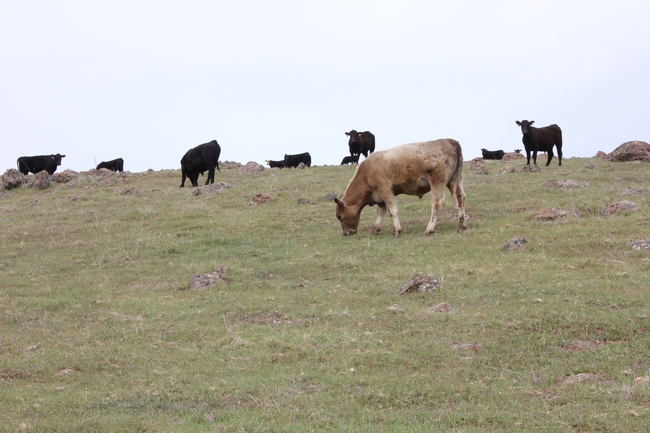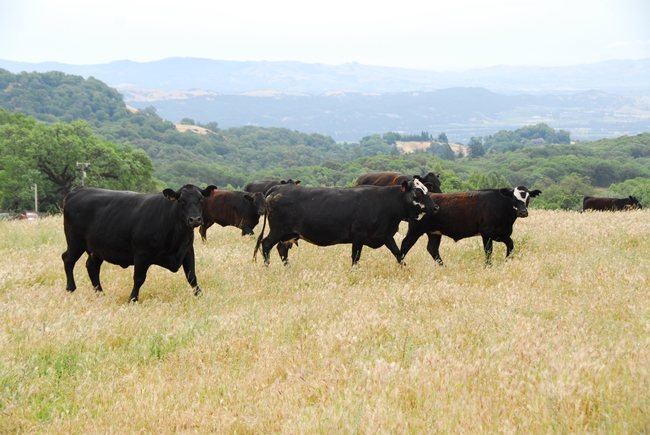
Posts Tagged: Grazing management
Match.Graze launches to reduce wildfire fuel, feed livestock
Matchmaking grazing animals with grass and rangelands
Professional grazing of overgrown rangelands, pastures and parcels is proven to reduce the spread of dangerous and costly wildfires.
Do you have land but no livestock and feel concerned about fire fuels on your property? Or are you a livestock owner that can provide a grazing service and/or need land and forage for your animals? Match.Graze can help.
Match.Graze is a free online platform connecting landowners statewide who want grazing animals to livestock owners with animals that can provide vegetation management services, created by UC Cooperative Extension.
From small semi-rural communities to large open spaces, grazing can provide an affordable solution to the inevitable accumulation of fire fuels. Grazing can be more cost-effective for reducing fuels on landscapes that are too steep, rocky or remote for mowing or chemical treatment, or in the wildland-urban interface where burning is not an option.
“I've noticed on several fires, including extreme fires, the fence lines where the fire just stopped. And the one variable, the one difference, was grazing,” said Marshall Turbeville, CAL FIRE battalion chief.
Cattle, sheep, goats and other grazing animals all have different roles to play in grazing for fire fuel reduction. If you want to use livestock to help reduce fire risk in your area, visit MatchGraze.com.
“Every property is different and requires thoughtful consideration of how it should best be grazed,” said Stephanie Larson, director of UCCE in Sonoma County, UCCE livestock and range management advisor and co-creator of the livestock-land matchmaking service. “UC Cooperative Extension is here to serve, put Match.Graze to work and let's prevent catastrophic fire while helping landowners and agriculture.”
To find a local grazing partner, visit MatchGraze.com, set up a free account, create a pin on the map and make a match.
Low residual dry matter on rangeland a concern heading into wet season

With some recent forecasts bringing encouraging news about a potential El Niño, some ranchers have been asking about what they should expect in terms of forage production, if and when the rains come. What they want to know is how soon rangeland productivity will reach the pre-drought levels again. One issue that I always draw their attention to is the levels of residual dry matter (RDM) on the rangelands. Even with the reduction in herd sizes and shorter grazing seasons employed by most producers, more rangelands now have less than recommended RDM levels.
RDM is a measure of the old plant material (without counting summer annuals) that are left standing or on the ground before the fall precipitation comes. It is a great indicator of both forage production and grazing intensity. These leftover plant materials are critical on California rangelands to reduce erosion and nutrient loss, and to create a conducive environment for diverse plant communities to thrive. Optimum RDM levels are site specific, they range from 100-2,100 pounds per acre, and depend on precipitation zone, slope and tree canopy cover. Ideal RDM levels increases with precipitation and slope, and decreases with tree cover. Studies show that too low or too high RDM levels will reduce species composition and forage production, both factors critical to any livestock production system. The good news is that annual rangelands are resilient and will likely return to normal production within two years after bringing RDM level to recommended standards.
Knowing the RDM standards for one's rangeland and continuously monitoring is an important step towards achieving sustainable rangeland management and livestock production.
Details about RDM standards, data collection methods and more can be found in the free UC Agriculture and Natural Resources publication Guidelines for Residual Dry Matter on Coastal and Foothill Rangelands in California.
Author: Fadzayi Mashiri, Ph.D.

